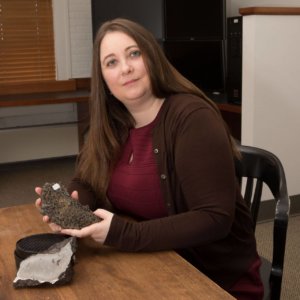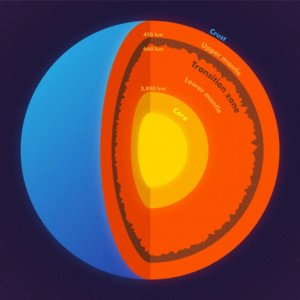
Inner Earth? Mountains and plains 660 kilometers below the Earth's surface
 09. 04. 2019
09. 04. 2019

At school, he teaches us that the Earth is divided into three layers. Cortex, mantle and core, which in turn is divided into inner and outer core. The basic and precise scheme, but still leaves more subtle layers that scientists begin to identify within our planet. A team of geologists has uncovered a previously unknown layer in the middle of the Earth's mantle, whose properties resemble those of the planet's surface.
New Earth Study
The new study was published in the Journal of Science and authors are Jessica Irving and Wenbo Wu of Princeton University in collaboration with Sido Ni of the Institute of Geodesy and Geophysics of China. the study describes how scientists used data from seismic waves of a major earthquake in Bolivia and located a new area within the Earth at depths of 660 kilometers. It should be a mountain range and plains very similar to those on our planet. To look deep into the planet, scientists had to use the strongest waves that exist on our planet - the seismic waves generated by the massive earthquake.
Jessica Irving says:
"We are drawing on a big and deep earthquake, where the whole planet is shaking. Such a large earthquake does not come often. We are lucky to have many more seismometers than we had 20 years ago. Seismology is a different field than 20 years ago, the difference is between tools and computing resources. "
Seismic Wave Data
For this particular study, key data was obtained from seismic waves captured after 1994 magnitude magnitude seismic events in Bolivia (year 8,2). This is the second most powerful earthquake ever recorded. The data itself is nothing if you don't know how to use it. That's why scientists used a group of Tiger supercomputers from Princeton University to simulate the complex behavior of scattered seismic waves in the depths of the Earth. The technology used for this analysis depends almost entirely on one property of the waves: its ability to bend and bounce.
In the same way, light waves can bounce (mirror) in a mirror or bend (refraction) as they pass through a prism, the seismic waves travel directly through homogeneous rocks, but they are reflected or refracted when they reach boundaries or inequalities.
Wu - main author of the article says:
"We know that almost all objects have rough surfaces, so they scatter light."
Scientists remained stunned by the inequality of the border. As they explain, in terms of topography, it is a rougher layer than we live on. While the new study describes one of the most sensational discoveries under our feet, their statistical model does not offer much information to allow for accurate determination of height. However, scientists say there is a chance that some of these underground mountains are much larger than larger than we can ever imagine. He claims that even the bumpiness was not evenly distributed. According to scientists, as well as the surface of the bark has smooth oceanic plates and massive mountains, the boundary of 660 km under our feet has uneven areas and smooth surfaces.





 1
1

